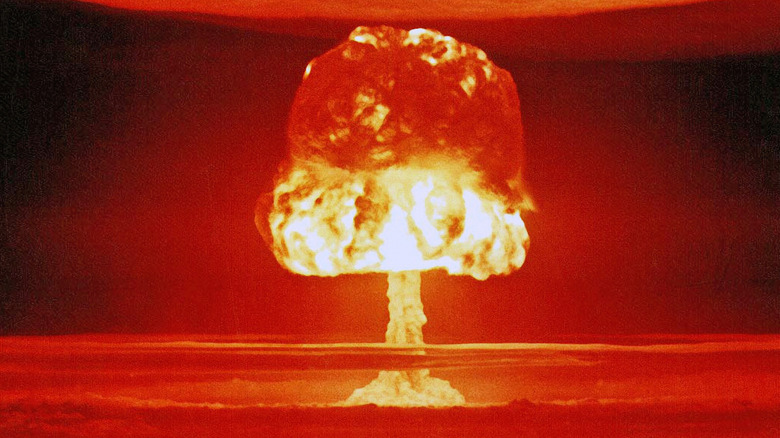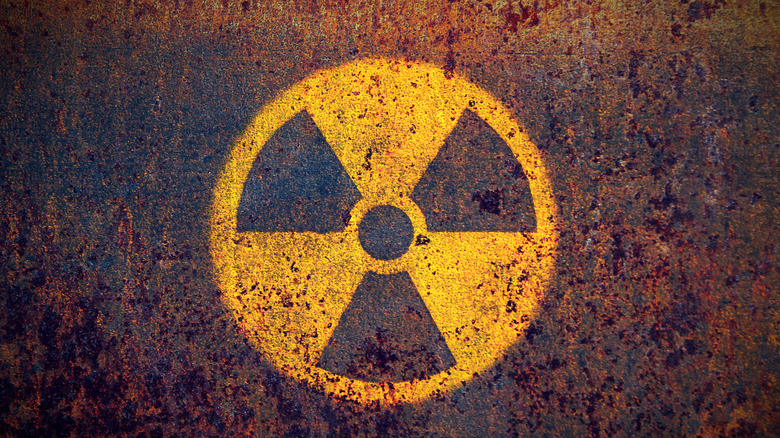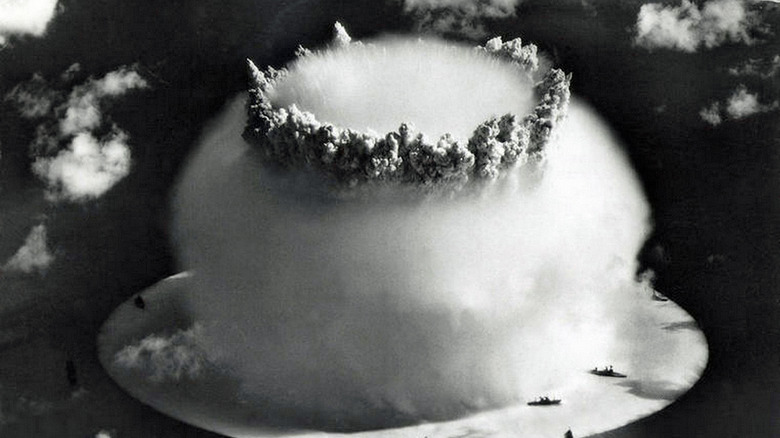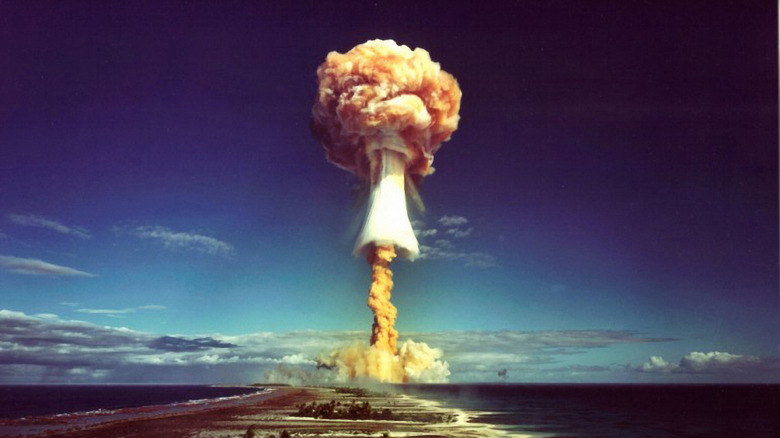The Three Different Types Of Nuclear Bombs Explained
One of the most impressive inventions in human history –- and, perhaps, one of the most terrifying — is the nuclear bomb. First developed during World War II, the weapon of mass destruction was used in the theater of war in 1945, when the United States dropped one on Hiroshima, Japan, according to Britannica. Later, the U.S. dropped a second bomb over Nagasaki, according to the United Nations. These two atomic bomb deployments remain the only time nuclear weapons have ever been used in war, but the weapons are regularly tested, and these efforts prove the weapons' destructive power has only grown since the 1940s.
Nuclear weapons work by either severing or combining particles at a subatomic level. This scientific feat, once thought impossible, has the potential to create huge amounts of energy, according to Massive Science. But, did you know there are actually different types of atomic weapons? Rather than a single sub-class, atomic weapons exist in multiple varieties, with different scientific mechanisms powering them.
Fission bombs
The first type of nuclear bomb is the fission bomb or atomic bomb and was the only type ever to be used in war, according to PBS. Fission bombs, as the name suggests, are powered by nuclear fission, or the splitting of an atom, according to Britannica. In an atomic bomb, a single neutron is used to divide an atom's nucleus, or the center of that atom, into multiple parts. This triggers a chain reaction that releases significant amounts of energy.
The exact impact of an atomic bomb depends on how much fissionable material, such as uranium and plutonium, an atomic bomb contains. The more of these elements the bomb contains, the more atoms will be split, and the larger the impact of the bomb will be. Atomic bombs generate much larger explosions for their size than standard bombs. As a result, the largest atomic bombs can kill millions of people, according to PBS.
Hydrogen bombs
Also called thermonuclear weapons, hydrogen bombs are the second type of nuclear bombs. Unlike atomic bombs, hydrogen bombs create energy through a process called nuclear fusion, according to Britannica. In nuclear fusion, the components of atoms combine instead of splitting, according to PBS, a reaction that, like nuclear fission, generates significant amounts of energy. Fusion doesn't just occur in nuclear weapons: It also occurs in the super-hot bellies of stars, according to General Atomics Fusion Education. However, forcing atoms to combine is also a very energy-intensive process. Atoms must be heated up to temperatures of millions of degrees before they'll cooperate. In order to achieve these high temperatures, an atomic bomb is usually detonated, which in turn triggers the hydrogen bomb.
Hydrogen bombs have never been detonated in a war, though testing has proven that these bombs are very deadly, and have the potential to kill many more people than atomic bombs, according to PBS. However, not many countries have successfully created or tested a hydrogen bomb. Those on the list include the United States, China, Britain, France, and, before it dissolved, the Soviet Union, according to The Washington Post.
Radiological weapons
The third and final type of nuclear bombs are radiological weapons. Also called dirty bombs, these weapons are distinct from atomic and thermonuclear weapons in that they're unlikely to cause the deaths of millions of people, but can make the area uninhabitable, according to PBS. Instead, dirty bombs use standard explosives to spread potentially dangerous radioactive material, according to the Centers for Disease Control. It is actually the standard explosives themselves which pose the greatest threat to people's livelihood, while the radioactive components cause terror rather than physical illness.
If a dirty bomb is detonated, it would require an evacuation of the nearby area and an intensive clean-up effort, according to the United States Nuclear Regulatory Commission. According to Britannica, dirty bombs have been appealing to terrorist groups with some efforts to detonate them, including alleged attempts by a group of Chechen separatists in 1998 and by an American in concert with al-Qaeda in 2002. However, like hydrogen bombs, no dirty bombs have ever been used on people.



